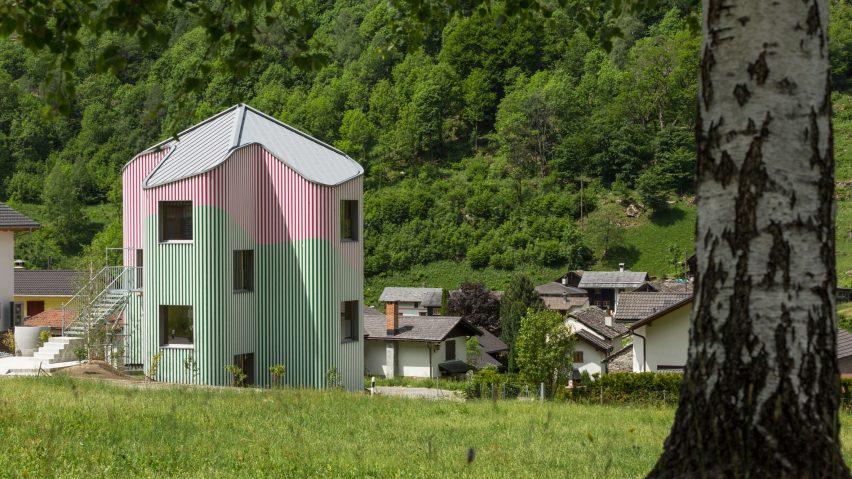
Green and pink stripes add colour to curved walls of house in Switzerland
The signature stripes of artist Daniel Buren cover the curved walls of this timber-framed house by architect Davide Macullo, which functions as a piece of public art in a picturesque Swiss valley.
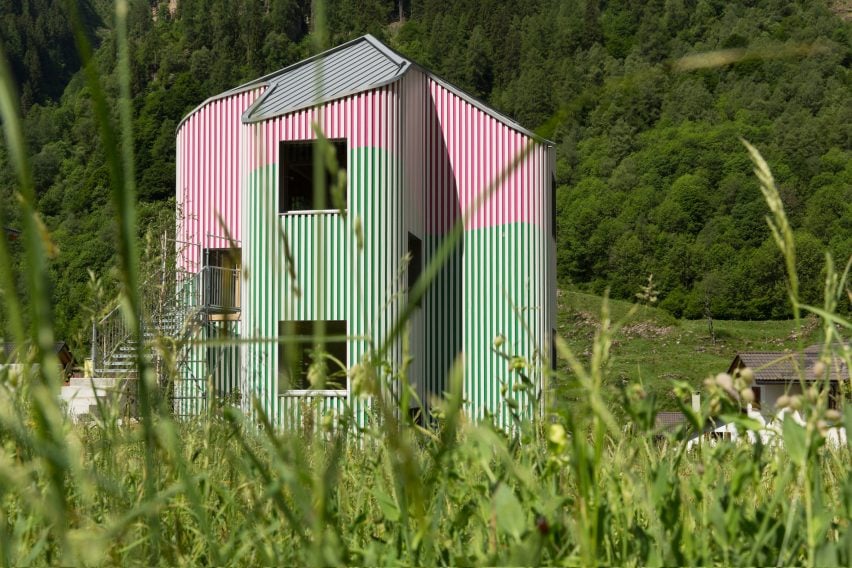
For Swiss architect Davide Macullo, working with the French conceptual artist Daniel Buren was a lifelong dream come true.
"It was a big help to someone growing up in a small place and dreaming about abstract art to find someone like Daniel Buren," Macullo told Dezeen.
"At that time he invented minimalism, for me. He condenses all the beauty into recognisable stripes."
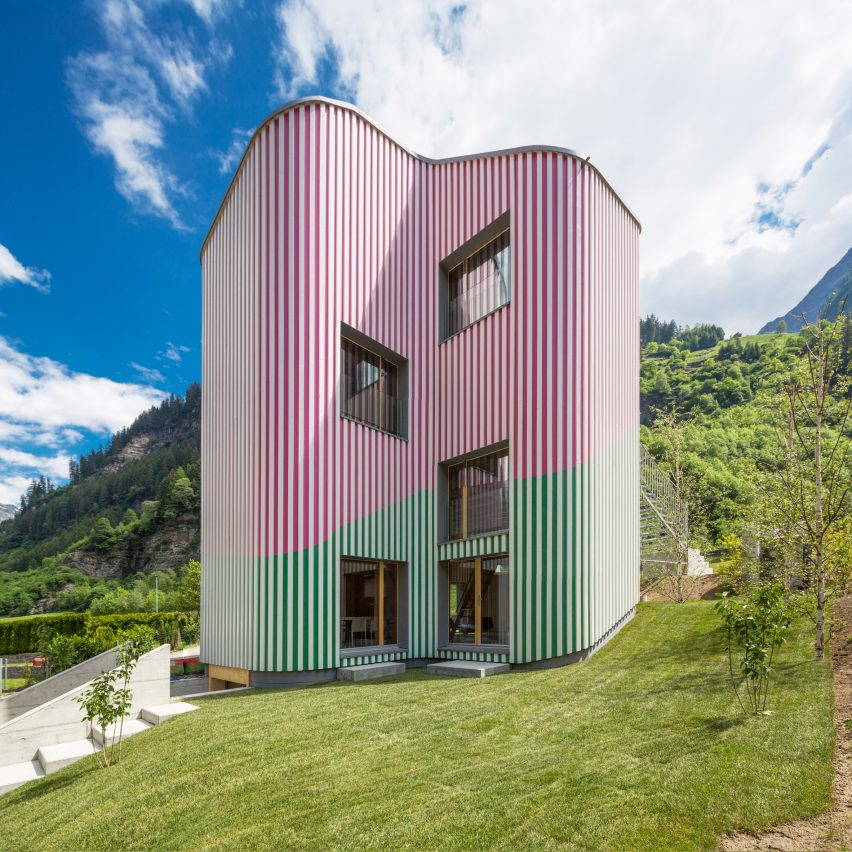
He approached Mario Cristiani from Galleria Continua, who introduced him to Buren in Paris and together they devised Swiss House XXXII.
Macullo was adamant that the art be integral to the structure of the building, rather than just a surface design or a temporary installation. The vertical white stripes on the pink and green cladding are formed from slats and an integral part of the building.
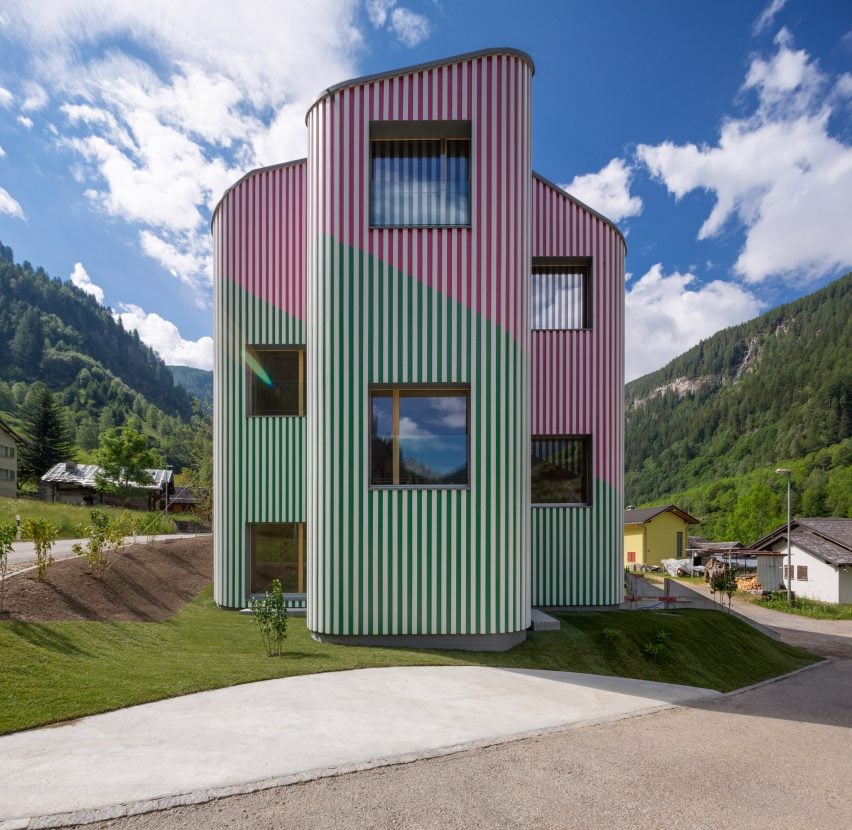
"Without the art the building does not exist, it's part of the structure of the building," he said. "You cannot divide art from the architecture."
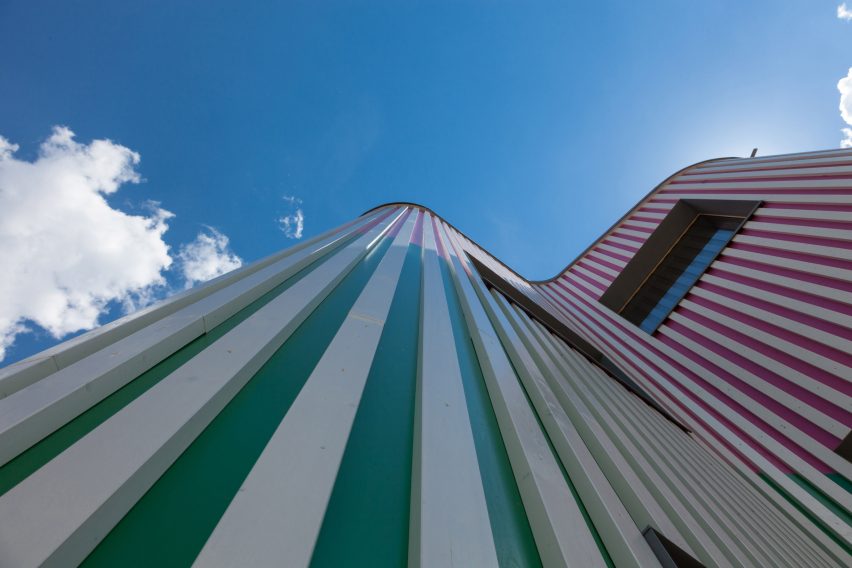
The frame is made entirely from untreated timber using traditional building techniques. The walls follow the cruciform plan to create an undulating form that shifts according to the angle the house is viewed from.
"From above it becomes a very strong graphic sign, like a Swiss Flag in the middle of the Alps," explained Marcullo. "From far away it's exactly how a child would design a house, with two vertical lines, a roof on top and holes for the windows."
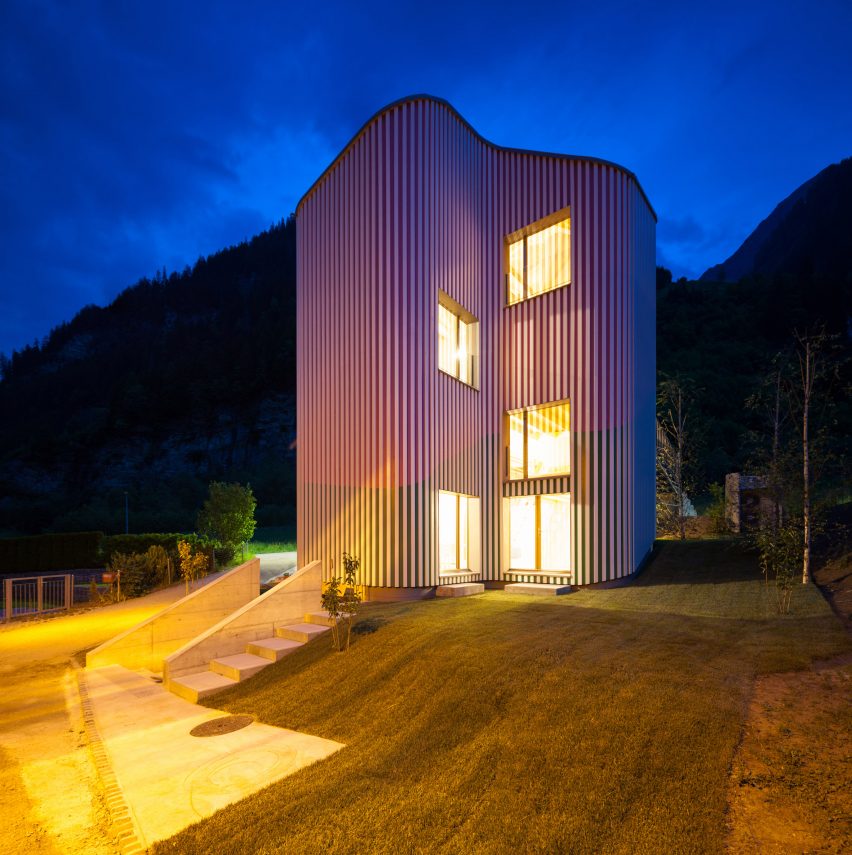
The candy-striped colours of Buren's walls were inspired by the setting of the Calanca Valley.
The green echoes the grass of the valley floor and the bright pink references the colour of the sky during summer sunsets, and the wildflowers that grow among the grass. The diagonal split of the colours alludes to the angle of the surrounding mountains.
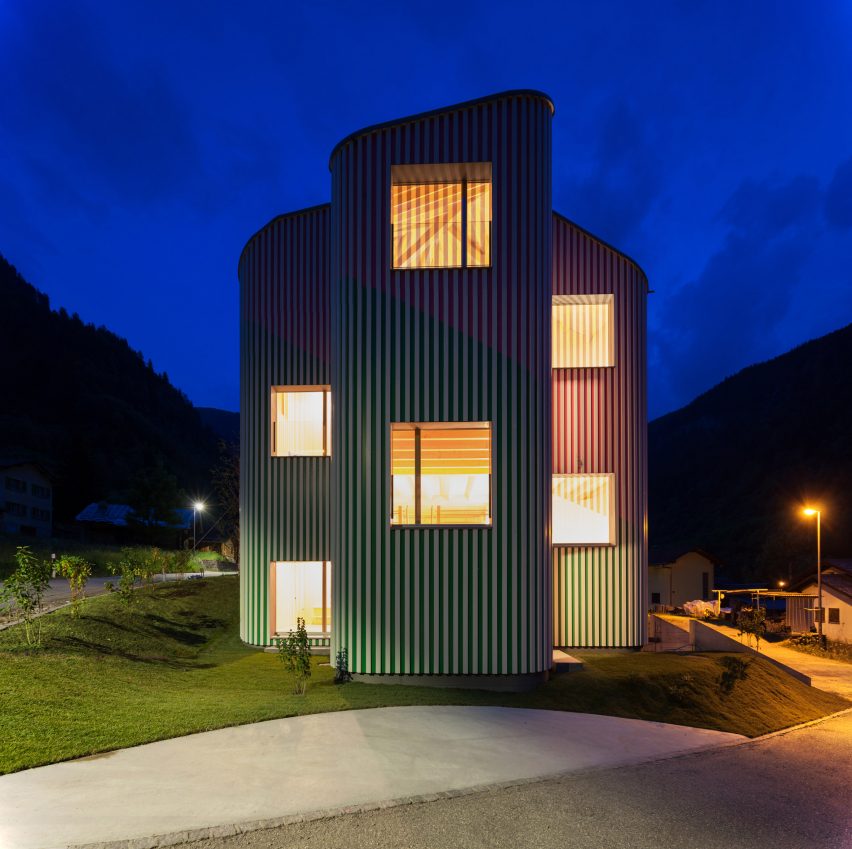
The architect, whose grandfather is from the village, wanted to pay tribute to the collaborative spirit of the cosmopolitan mix of people who live there.
"Everybody speaks at least three languages, they might have spent their life in New York and then come back, it's an interesting place," he said. "Everybody puts energy in to this village in different ways, that's why it survives."
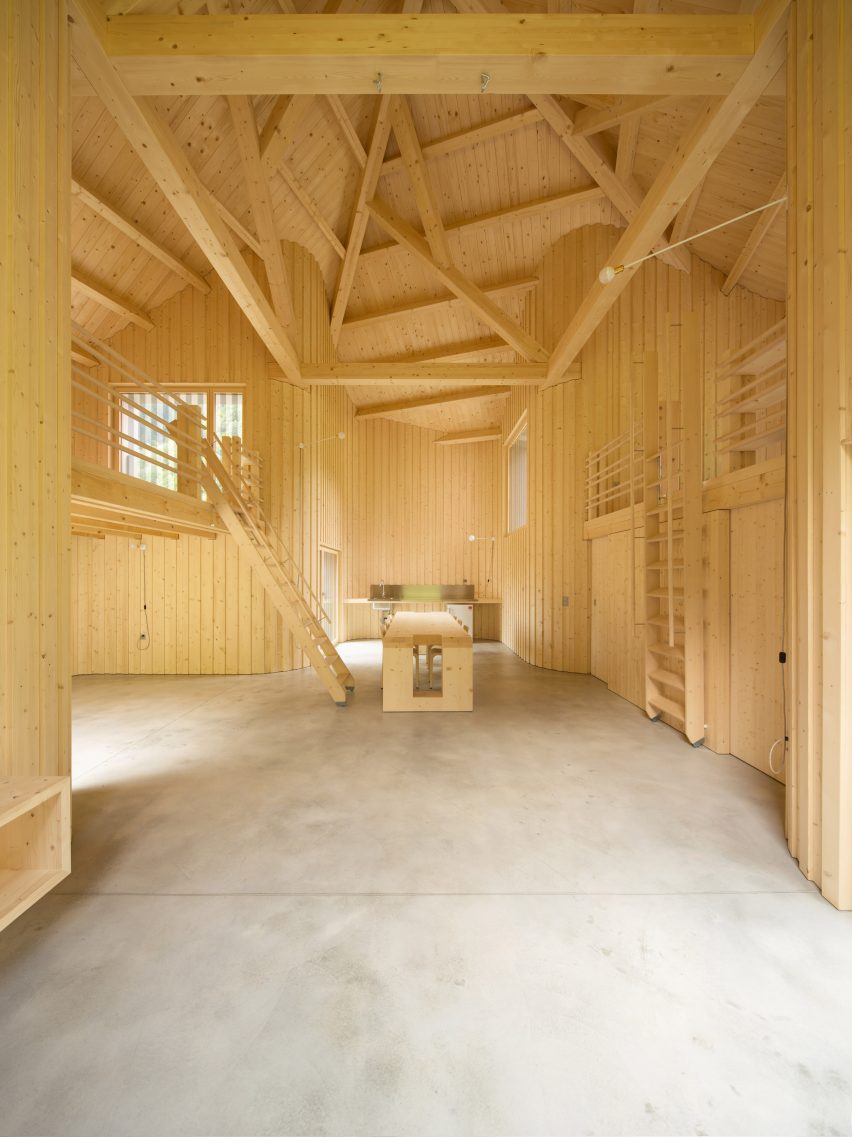
Marcullo, who owns the house, shares Buren's belief that art does not belong in a gallery or a private collection. The inside is simply exposed timber, revealing the structure of the building but leaving the art to be seen only by those on the outside.
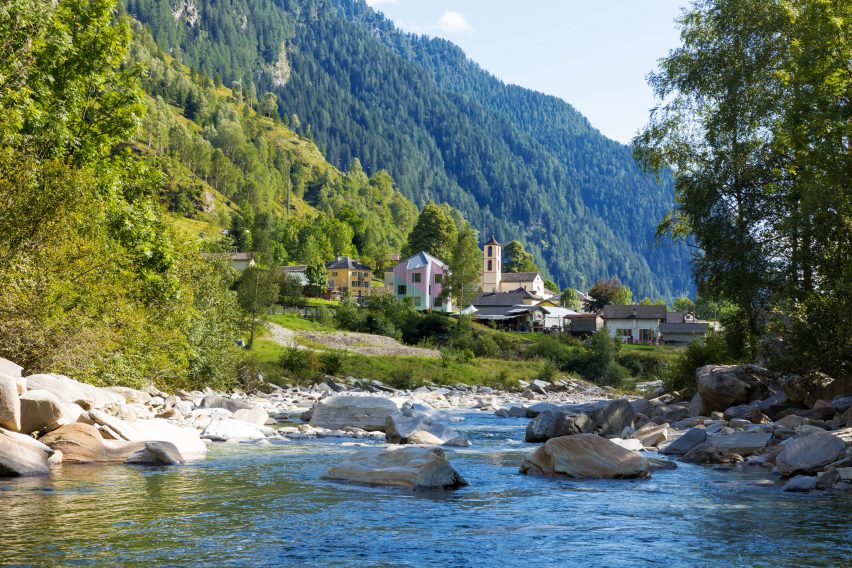
"The sculpture belongs to the village," he added. "When you build a house the life of a house is much longer than our lives. If we live a few decades, the house lasts centuries. It's interesting to do something for the community instead of just for yourself."
He also hopes that the work will inspire children growing up in the village by making them "feel they're in the centre of the world," as Buren's art did for him in his own youth.
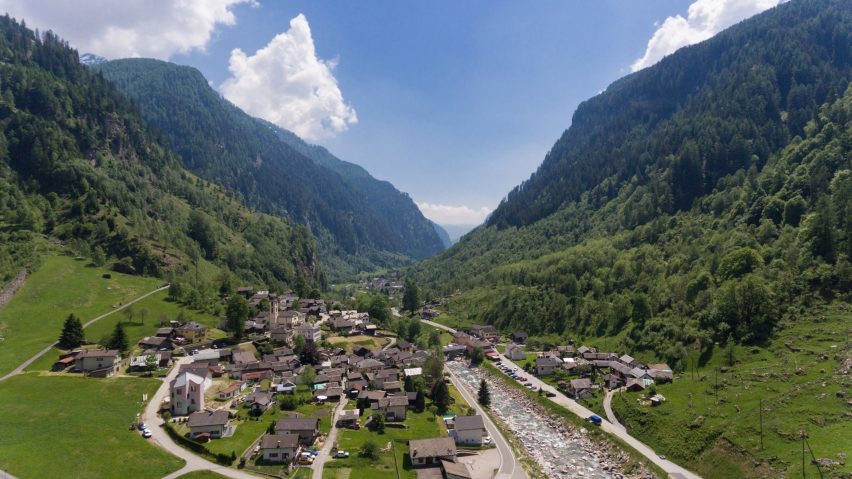
For Buren it was also a triumphant return of sorts. The artist had to flee Switzerland in 1969 after he was arrested following a guerilla installation of his work in Bern. The artist covered billboards in this city with stripes as an un-invited contribution to the Swiss curator Harald Szeemann's show, When Attitudes Become Form.
Invited or not, his signature stripes have covered everything from museums to fields of tulips in his 40-year career.
One of his most famous pieces is a series of black-and-white columns arranged on a grid in the inner courtyard of the Palais Royal in Paris. Les Deux Plateaux was controversial at the time due its cost and the stark contrast with the historic setting.
This summer the artist unveiled his permanent installation in the new Tottenham Court Road tube station, his first public artwork in the UK. Appropriately names Diamonds and Circles, it features giant shapes in primary colours against a backdrop of black-and-white stripes.
Last year he covered the glass roof of Frank Gehry's Fondation Louis Vuitton building in Paris, with brightly coloured filters in a chequerboard pattern.
Photography by Alexandre Zveiger.